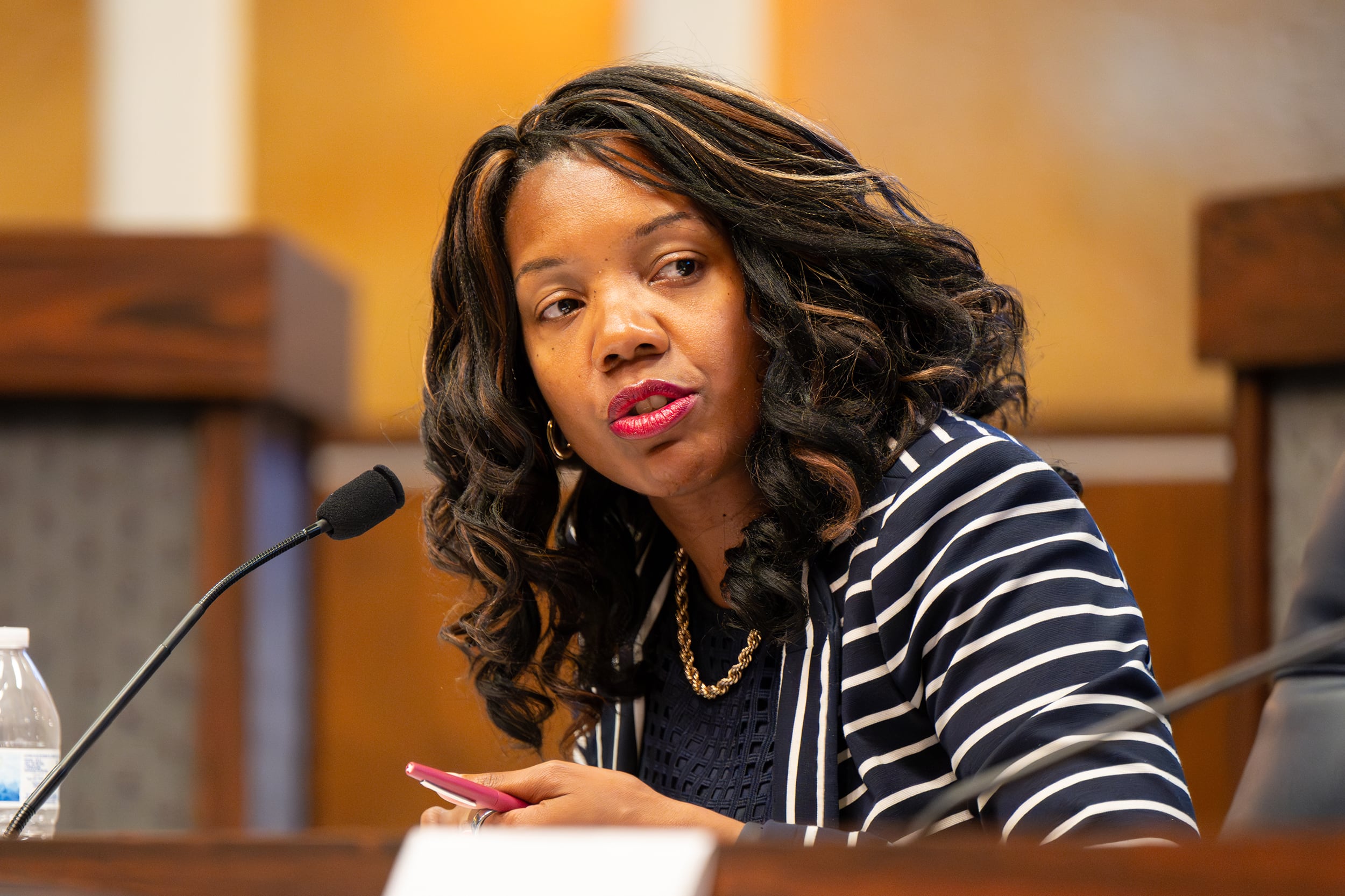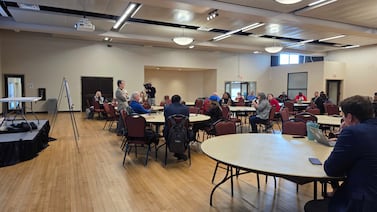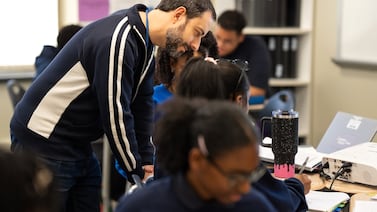Sign up for Chalkbeat Indiana’s free daily newsletter to keep up with Indianapolis Public Schools, Marion County’s township districts, and statewide education news.
Indianapolis schools could be on the verge of a seismic shift.
An advisory panel is weighing recommendations that would drastically alter who runs local schools. Several of the options presented at the Indianapolis Local Education Alliance’s meeting last week would dilute or eliminate the power of the elected Indianapolis Public Schools board. More broadly, they would mean big changes for district-run schools as well as charters.
While an elected seven-member board oversees district schools, charter schools have their own nonprofit boards. Indianapolis charter schools are overseen and authorized by one of three authorizers — the mayor’s Office of Education Innovation, Education One at Trine University, and the Indiana Charter School Board. But state law places no limit on the number of charter authorizers, which can also include school boards.
In each of the four models floated by ILEA task forces last week, one authority would oversee both district and charter schools of all types.
The ILEA will meet in the first week of December to narrow down the options for changing school governance. The ILEA will then host public input sessions before voting on the final recommendations to city and state leaders on Dec. 17. The time and location of that meeting has not yet been announced.
Alliance members could change or combine each one as they settle on a final governance model, ILEA consultant Michael O’Connor told Chalkbeat. Members could decide to add more charter authorizers to certain models, for instance.
Each model would also likely have an appeals process for charter schools that seek to open or challenge a decision made by the charter authorizer, O’Connor said.
Separately, the ILEA will also consider suggestions for changing how district schools and charters share transportation resources and facilities.
Of the 54 charters within IPS borders that the ILEA is studying, 25 are part of the IPS Innovation Network of autonomous schools. Fifteen of the Innovation Network charter schools operate in IPS buildings, 12 of them use IPS transportation, and 11 do both. Another 29 charters are independent.
Here is an overview of each of the four governance models the ILEA could consider.
Maintain IPS as an elected board, add charter oversight
In this option, the IPS board would oversee both district and charter schools. While independent and Innovation charters would maintain their own individual school boards, all charters within IPS borders would report up to the school board.
Only the IPS board would have the power to authorize charter schools in district boundaries. Charter schools whose applications are denied by the IPS board — or those that have their charters revoked or not renewed — could appeal to the Office of Education Innovation.
The IPS school board would have the power to levy and collect property taxes. It would also set rules for all schools regarding transportation access and which schools would have access to buildings.
Create an appointed advisory board
Another option would create a “collaborative compact advisory board” to oversee district and charter schools. The board would have the power to levy and collect property taxes for schools, and also serve as the charter authorizer. The Office of Education Innovation could also serve as a second authorizer.
The board would consist of appointees from IPS, the mayor, and charter schools, and would set policy. Exact details on appointees — whether IPS appointees would be chosen by the school board or superintendent or would be school board members themselves, for example — could be determined by state lawmakers. The IPS and charter school boards would report up to the advisory board.
Create an Indianapolis Education Authority
The third option would create an Indianapolis Education Authority overseen by a nine-member policymaking board and led by a secretary of education appointed by the mayor.
The board would be appointed by the mayor, with four members selected from the seven-member elected IPS board. This policymaking board would work with the secretary of education within the authority, which would serve as charter authorizer.
The authority would hire building and transportation staff.
IPS and charter school boards would report to the policymaking board, which would levy and receive tax dollars.
Replace an elected IPS board with an appointed one
Out of all four options, this one would give the mayor the most control over schools. The mayor would appoint all members of the IPS school board, which would oversee district schools. The mayor’s Office of Education Innovation would serve as charter authorizer, while the Indiana Charter School Board would serve as an appealing body for charter schools. Both independent and Innovation charter school boards would report to the IPS school board.
The board would levy and receive property taxes and would set policy on transportation and facilities.
Amelia Pak-Harvey covers Indianapolis and Lawrence Township schools for Chalkbeat Indiana. Contact Amelia at apak-harvey@chalkbeat.org.






